Making kovrizhka: This Russian gingerbread never gets stale
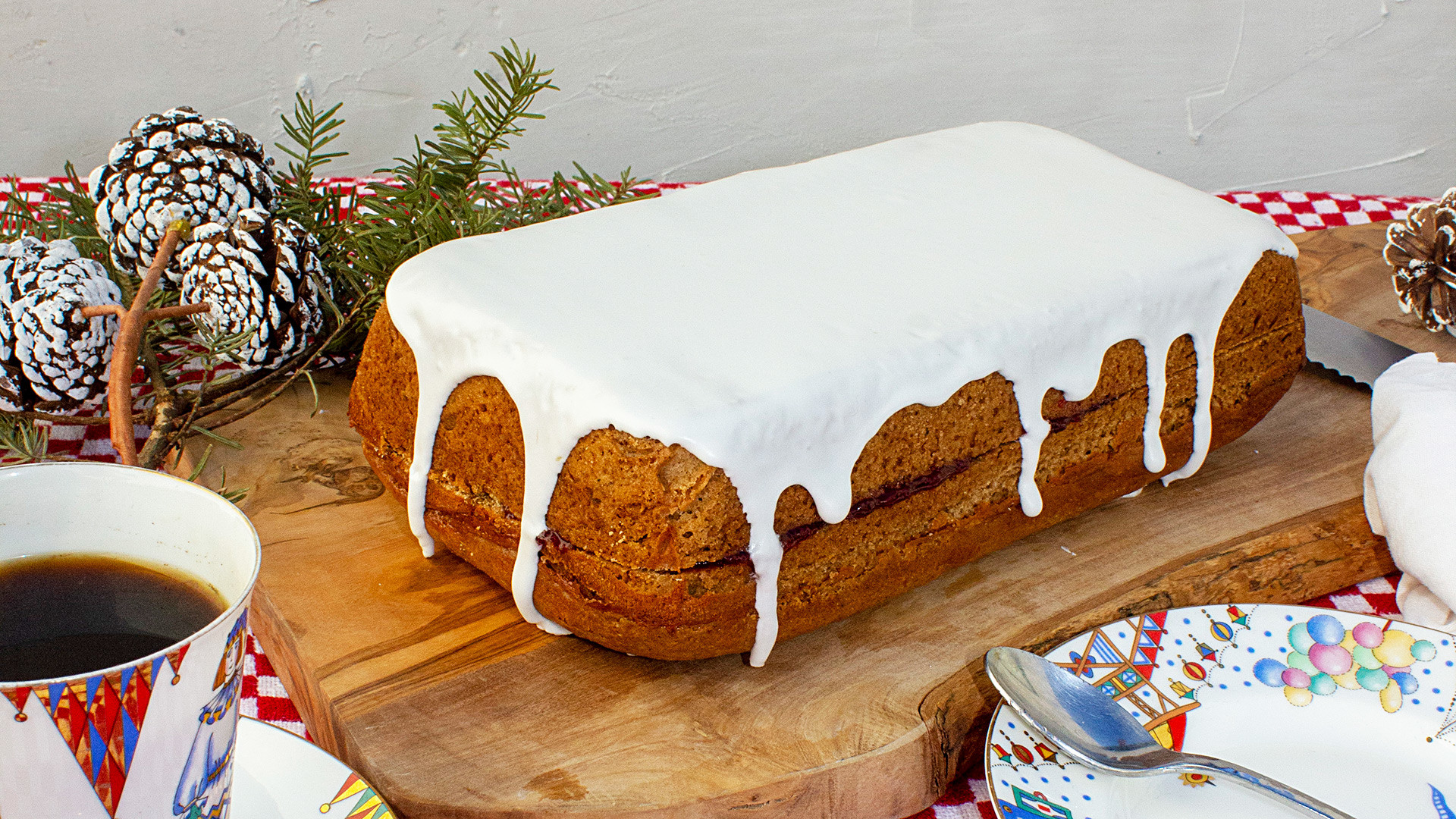
The first pryaniki appeared in Russia in the 9th century made from the simple mixture of rye flour with honey and berry juice. These were the simplest, and probably the most delicious pryaniki, because honey comprised almost 50 percent of its mass. Later, in the 11th-13th centuries, spices were increasingly added to pryaniki, and therefore, rather than honey, such flavors gradually became the most characteristic sign of gingerbread dough.
Kovrizhka, like every pryanik, gets its taste from the spices, the most characteristic of which is ginger-cinnamon. But nowadays, spices such as nutmeg, anise and many others are also used. In addition, you can add raisins, candied citrus peels and nuts when making kovrizhka, which, by the way, is the only type of pryanik that traditionally has jam as a middle layer.
Without the spices, the gingerbread dough is nothing special: basically, only flour, honey and sugar. Kovrizhka is one of the few gingerbread types that contains small amounts of egg and milk. Moreover, it is the honey and sugar that binds the ingredients in the classical recipe. This composition explains its special density: the dough doesn’t require rising because yeast is not used. Kovrizhka can be baked both from very thick and stiff dough, as well as dough with a very liquid, cream consistency. Thanks to the high honey content, kovrizhka will stay fresh for a long time.
Ingredients for kovrizhka:
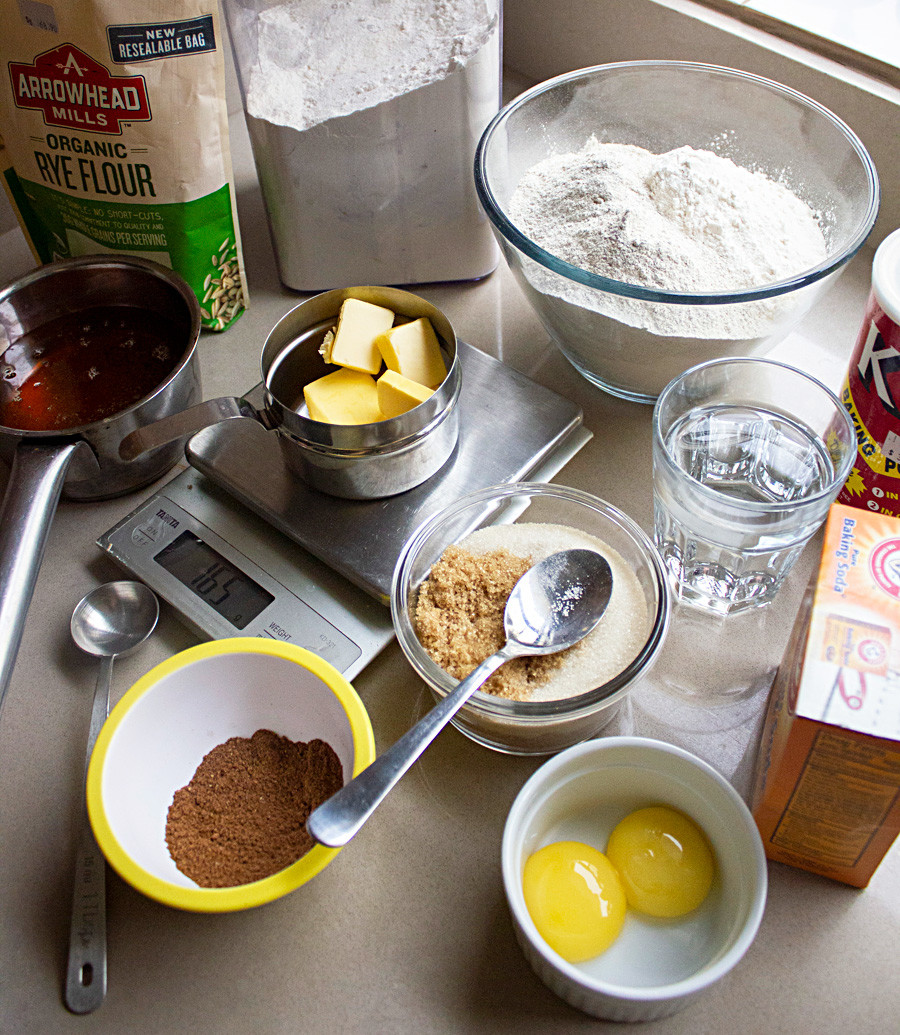
- 600 g all-purpose flour
- 150 g rye flour
- 100 g brown sugar
- 100 g sugar
- 100 g glucose syrup
- 375 g honey
- 180 g water
- 2 tbsp spice mix
- 2 tbsp baking powder
- ½ tsp baking soda
- 75 g melted butter
- 2 egg yolks
- 10 g salt
Cooking:
1. Make the spice mix. Combine and add these ground spices: 2 tsp of cinnamon, ½ tsp cardamom, ¼ tsp clove, ½ tsp allspice, ¼ tsp nutmeg, ½ tsp ginger powder, ¼ tsp black pepper and ¼ tsp anise.
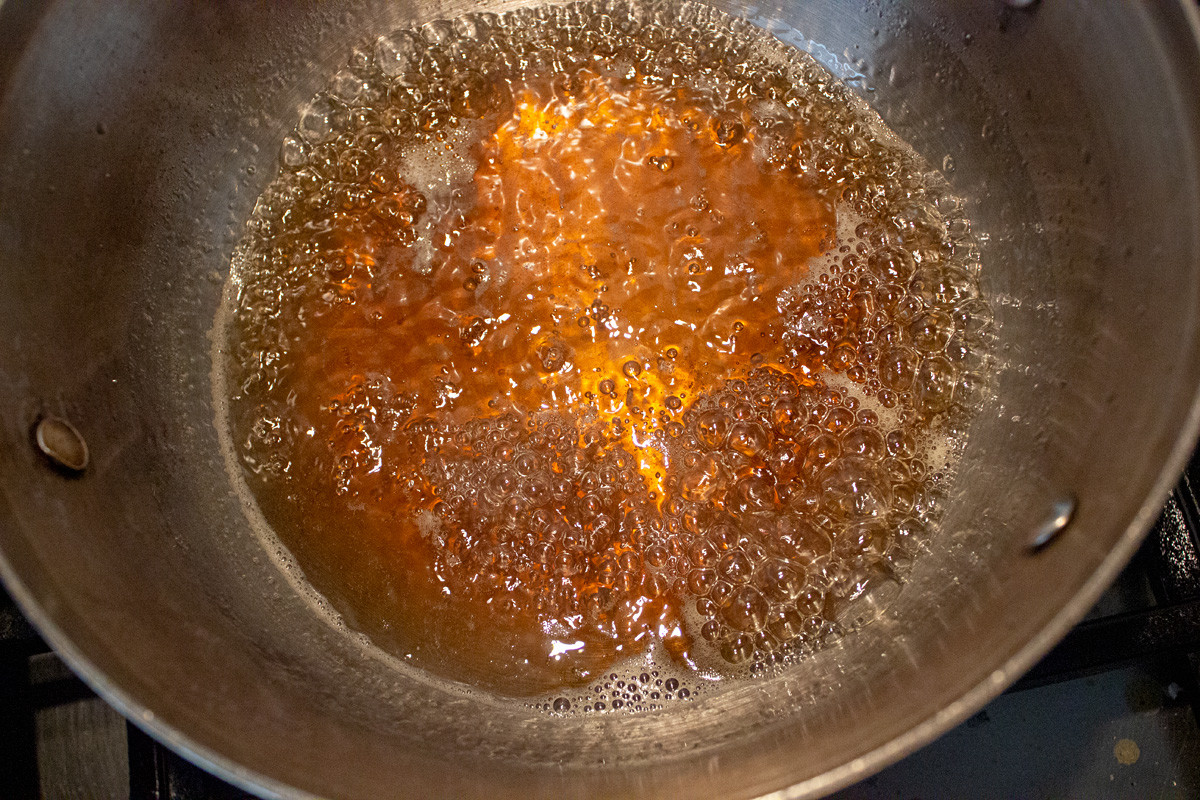
2. Heat the oven to 160°C.
3. In a big pot, bring the water and spices to a boil. At the same time, in another pot combine glucose syrup and honey, and warm the liquid to 60°C.
4. Pour the honey-glucose mixture into the boiled sugar syrup, and whisk until homogenous; take the mixture off the heat.
5. In a bowl combine your flours, salt and baking powder.
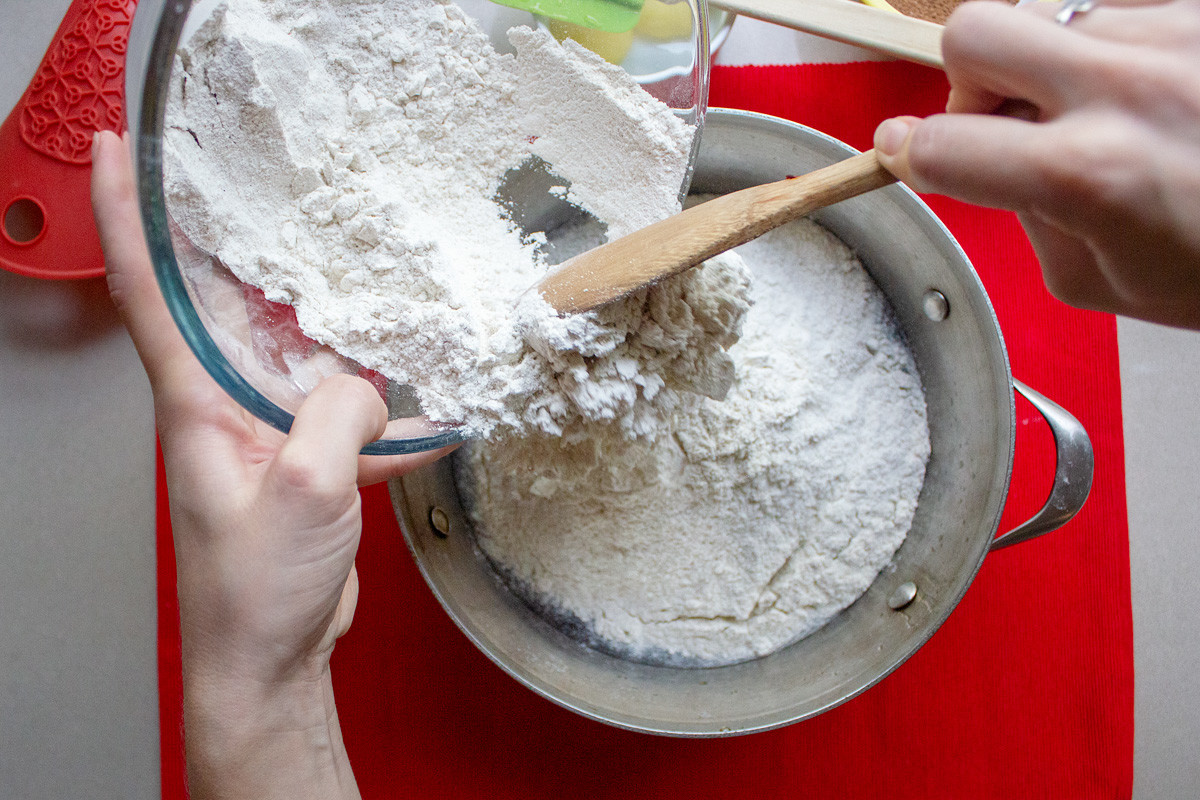
6. Place the flour mixture into the pot with all the spices, and add the dry ingredients with a wooden spoon.
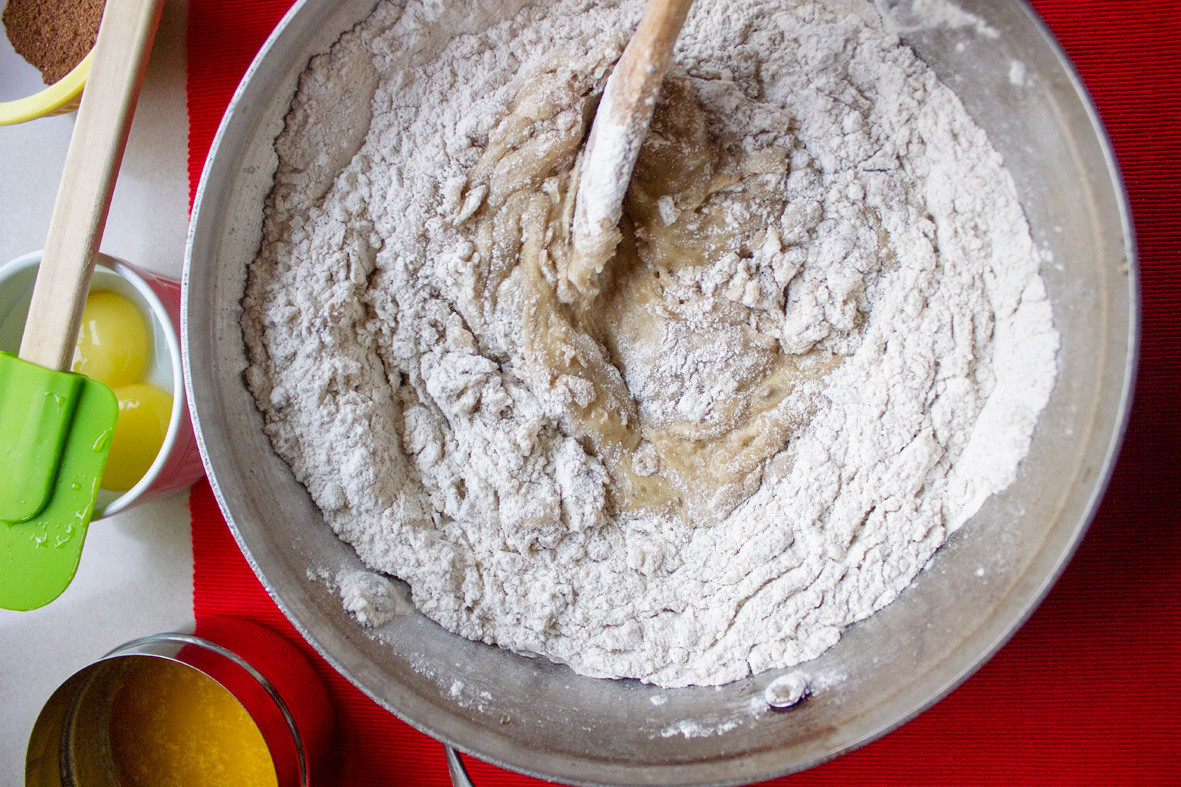
7. Then, add the egg yolks with spices. Add again.
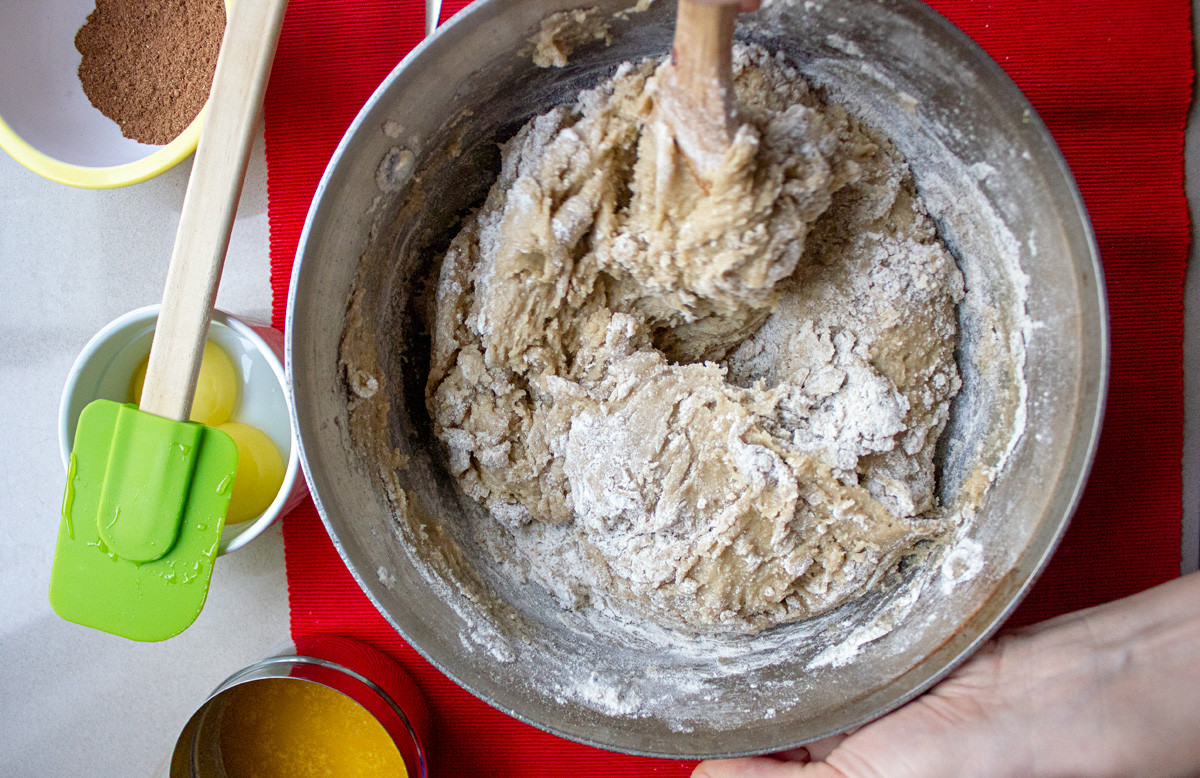
8. Finally, add the melted butter combined with soda.
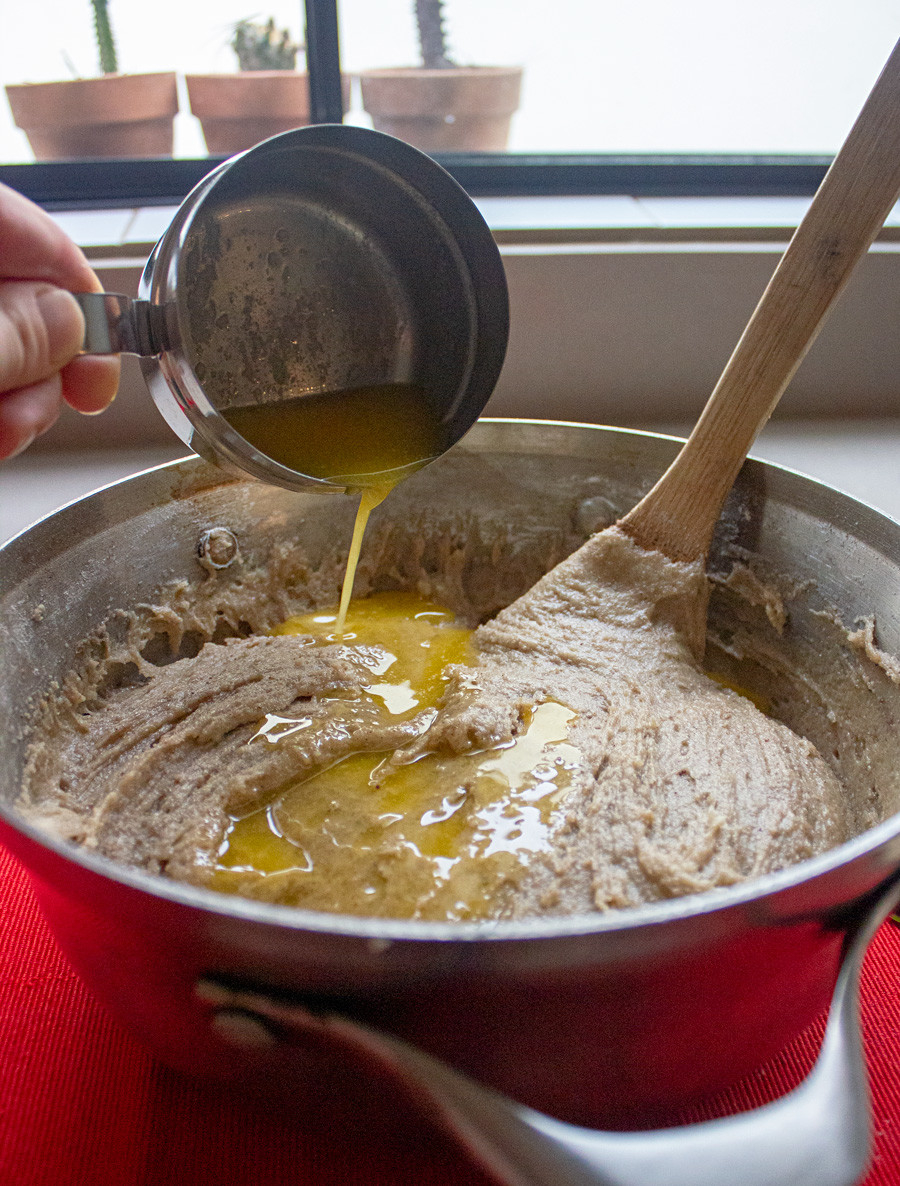
9. Your mixture should be homogenous, thick and not sticky.
10. Prepare your mold by lining it with baking paper, and brush it with a thin layer of butter. Place the mixture into the mold. Traditionally, the mold should be square or rectangular, and the thickness of the dough before baking should be about 2-2.5cm.

11. Put the kovrizhka into the hot oven, and bake for about 45 minutes to an hour, or until the toothpick comes out clean. Take out when ready, and let cool completely.
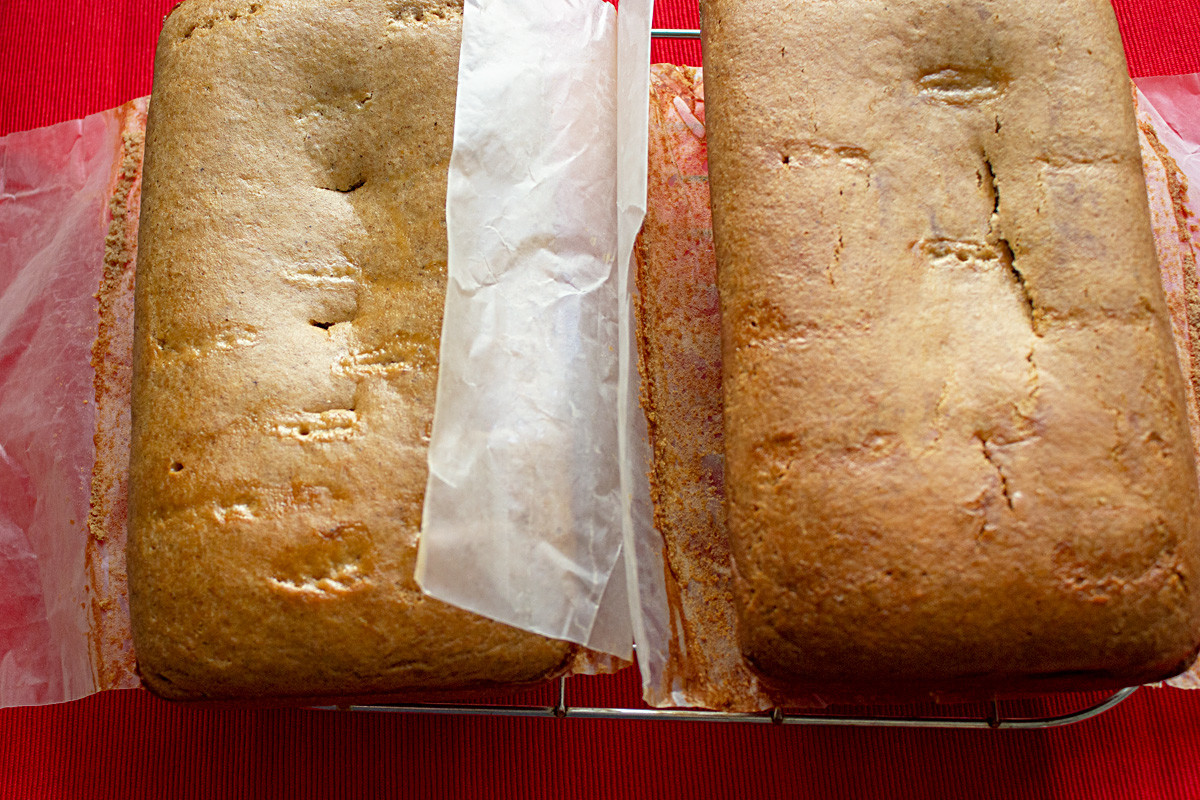
12. Take the kovrizhka and flip it upside down (the bottom part is flatter and more leveled than the top part). Cut into two parts – top and bottom. Smear apricot, cherry or any tangy jam on the bottom layer and cover with the top layer.

Ingredients for the glaze:
- 250 g powdered sugar
- 1 egg white
- 1 tbsp white vinegar
- 4 tbsp water
Cooking:
1. Prepare the glaze by combining all ingredients and whip with a mixer for 5 minutes, until very smooth.
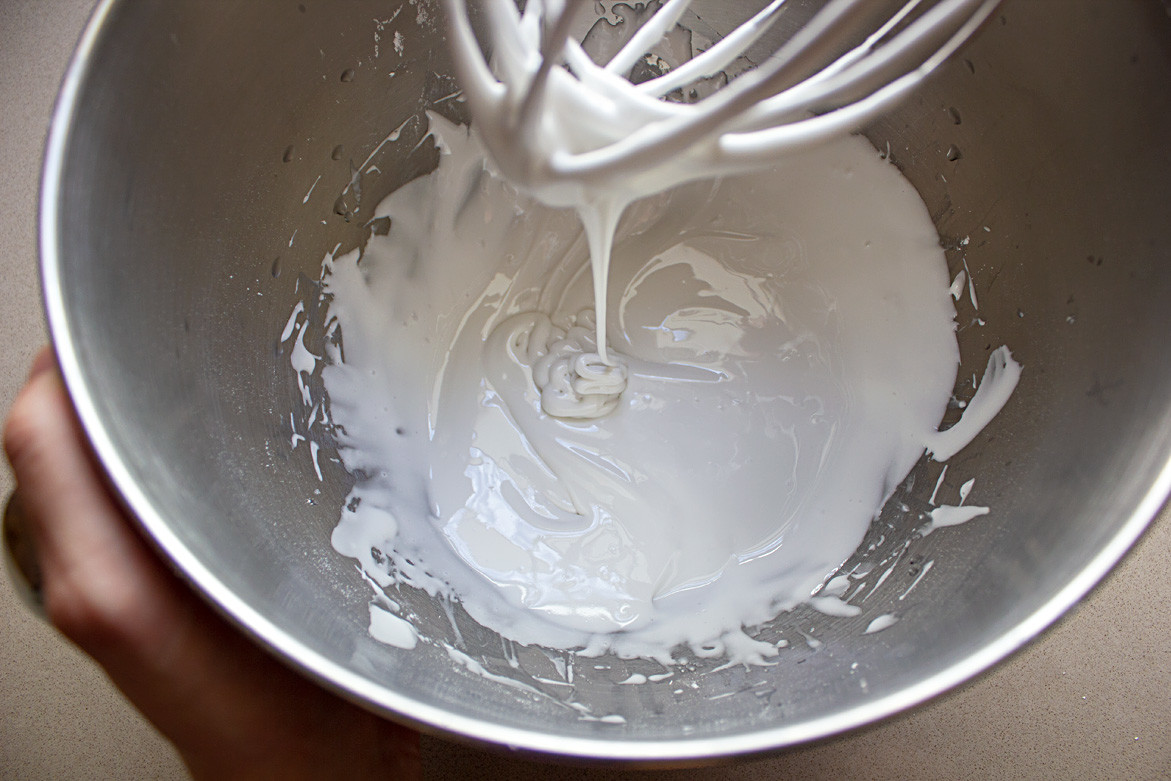
2. Smear the glaze on top of your kovrizhka, and flatten with a spatula. Let the glaze dry for at least an hour.

Priyatnogo appetita!
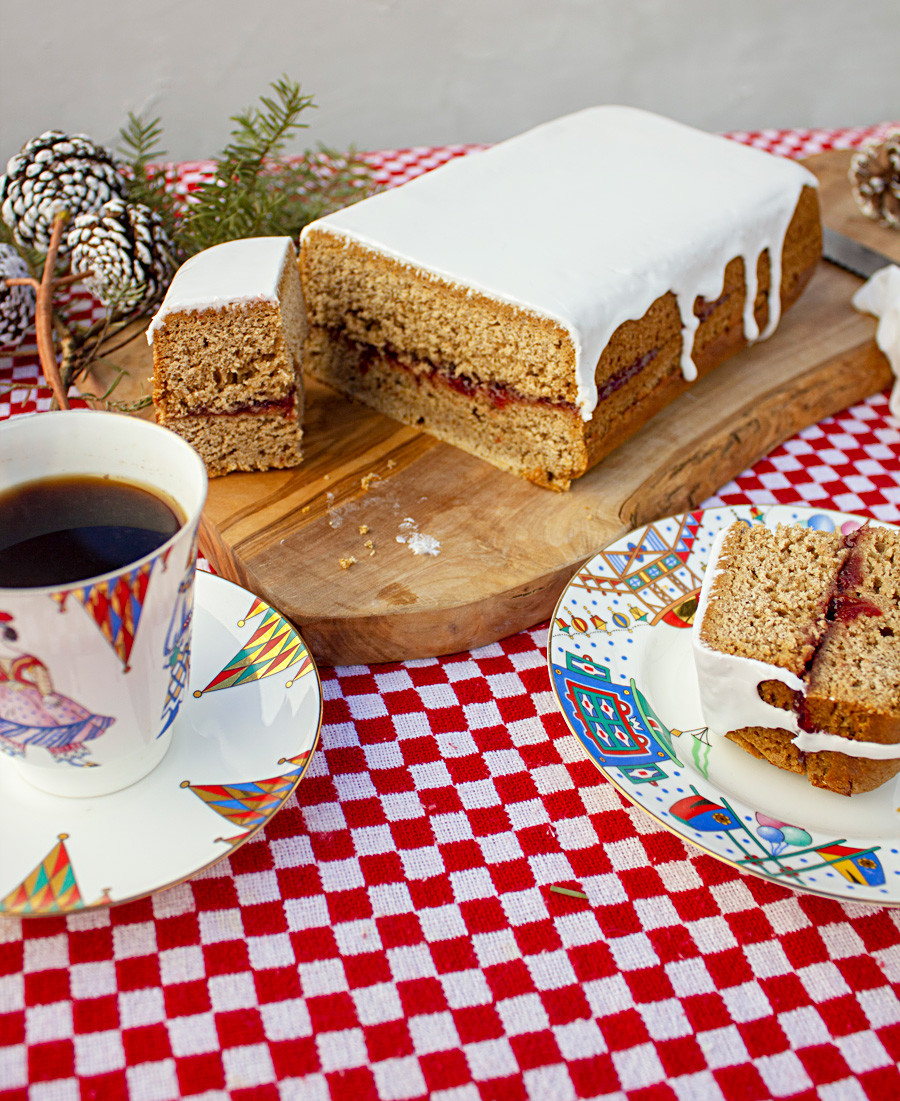
Read more: Soviet candies: How to make milk caramel that lasts forever
If using any of Russia Beyond's content, partly or in full, always provide an active hyperlink to the original material.
Subscribe
to our newsletter!
Get the week's best stories straight to your inbox